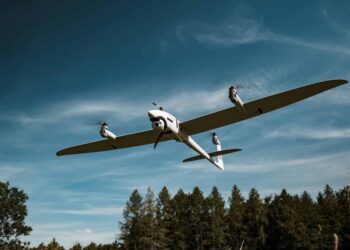Lockheed Martin, WASHINGTON: During a press briefing today at the National Press Club in Washington, D.C., Lockheed Martin showcased its latest developments in unmanned systems technology and its progress into the future net-enabled environment.
Lockheed Martin is applying its technology, experience and operational knowledge to develop innovative autonomous, integrated unmanned systems to meet its customers' future operational requirements – from the recently introduced Polecat and other unmanned aerial systems, to subsurface prowlers, such as the Sea Talon.
“The demand for unmanned systems is growing virtually every day. The reasons are numerous: unmanned systems are proving their worth on a daily basis, new technology is enabling new solutions, and traditional and new entities are seeing the utility of unmanned systems for their unique problems,” said Richard O'Lear, Lockheed Martin's vice president of Unmanned Aerial Systems. “Our customers want unmanned systems that can operate autonomously while integrating and communicating with each other and with other operational systems, whether these systems are in space, in the air, on the ground, or in or under the water. We have been preparing for the future and have made great head-way to achieving this vision.”
Lockheed Martin has been involved with unmanned systems since the early 1960s and is currently involved in development efforts that span multiple domains for aerial, ground, surface and sub-surface missions. During the past 40 years, unmanned systems have evolved from “stove-piped” platforms where each product operates independently, to multiple products that operate from a centralized system. The corporation's system-of-systems approach will allow it to develop unmanned systems that could lead to reduced life cycle costs, reduced and more efficient training time for the warfighter, and a safer environment for U.S. and coalition forces.
“Our focus,” continued O'Lear, “is to integrate these systems to enhance operational missions – from tasking to processing, exploitation, analysis, and information dissemination. We look at the way the entire unmanned system works with other manned and unmanned systems to produce a product or an effect that can be made available to the entire net-enabled community. This approach is an area where Lockheed Martin is extremely well suited and will allow us to meet the challenges of unmanned systems in the net-enabled world.”
Examples of programs include:
1. Polecat – Funded entirely with Lockheed Martin Internal Research and Development dollars, the Polecat Unmanned Aerial Vehicle (UAV) offers potential technology transfer to a future Long Range Strike Program and next generation ISR platforms.
2. Morphing Vehicles – A contract for Phase 3 for this unmanned aerial system effort was awarded by DARPA on August 3. After demonstrating the ability to maintain in-flight control of a small demonstrator, the next logical step would be to conduct a formal Advanced Concept Technology Demonstrator. The demonstrator should be of sufficient scale to evaluate the potential benefit of this revolutionary approach under realistic mission conditions.
3. Protector – Lockheed Martin has joined with BAE Systems and RAFAEL to bring the proven Protector unmanned surface vessel (USV) to support U.S. anti-terror/force protection missions and is investing in advanced USV hull designs, composite materials and control systems to bring the “best of breed” technologies for multi-mission operations.
4. Remote Minehunting System (RMS) – The company's Remote Minehunting System (RMS) has logged more than 2000 hours of at-sea testing and is now in Low Rate Initial Production in preparation for deployment on Guided Missile Destroyers and the Littoral Combat Ship.
5. Advanced Development Unmanned Undersea Vehicle (ADUUV) – in development as the Navy's test bed for submarine launched 21-inch diameter UUVs.
Headquartered in Bethesda, Md., Lockheed Martin employs about 135,000 people worldwide and is principally engaged in the research, design, development, manufacture, integration and sustainment of advanced technology systems, products and services. The corporation reported 2005 sales of $37.2 billion.
Germany says adding explosive drones to weapons arsenal
Germany said Friday it would buy explosive drones for the first time as Berlin boosts investments in its armed forces...









